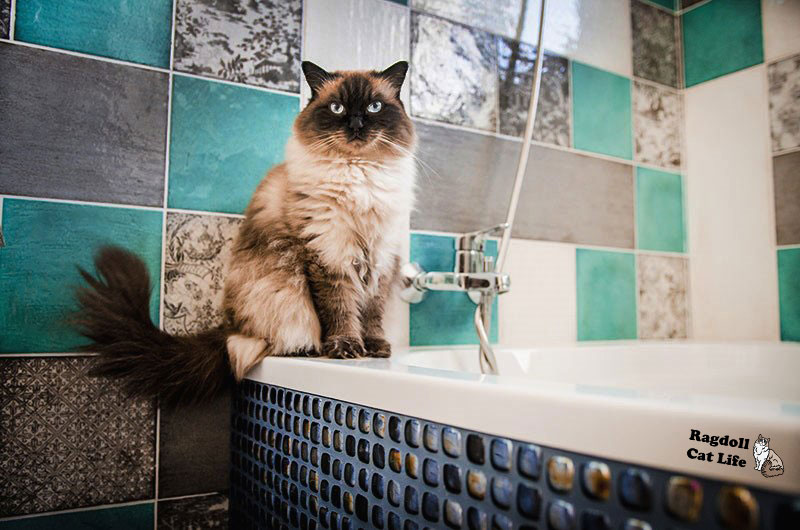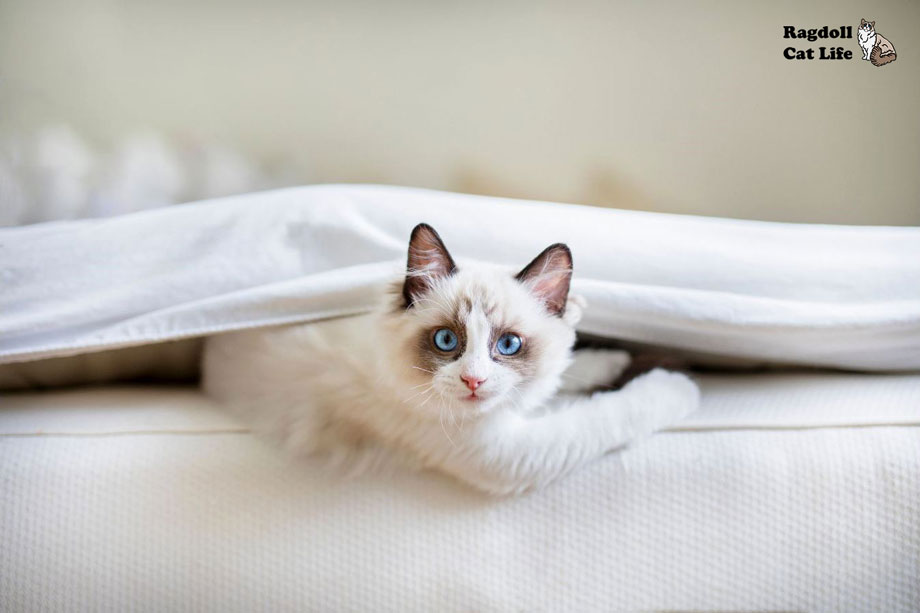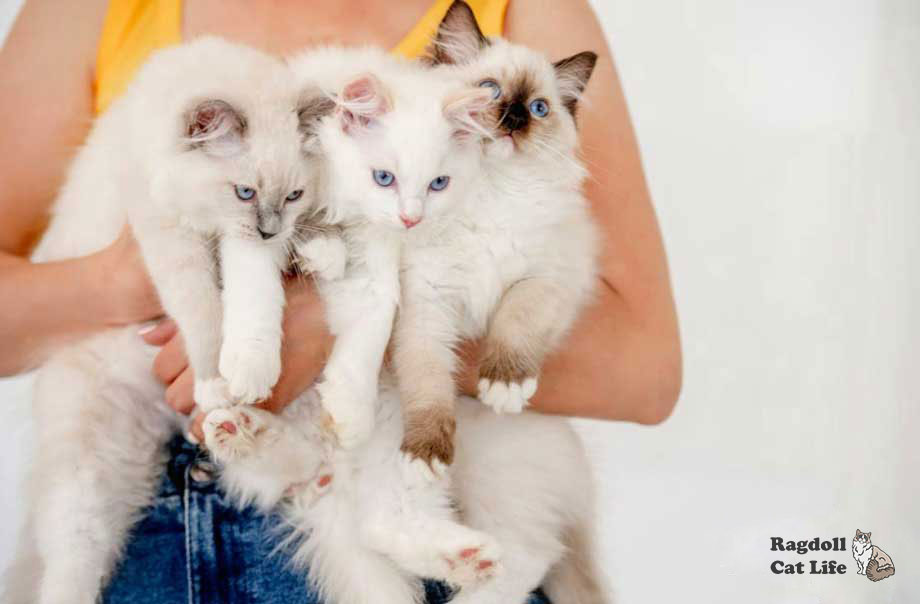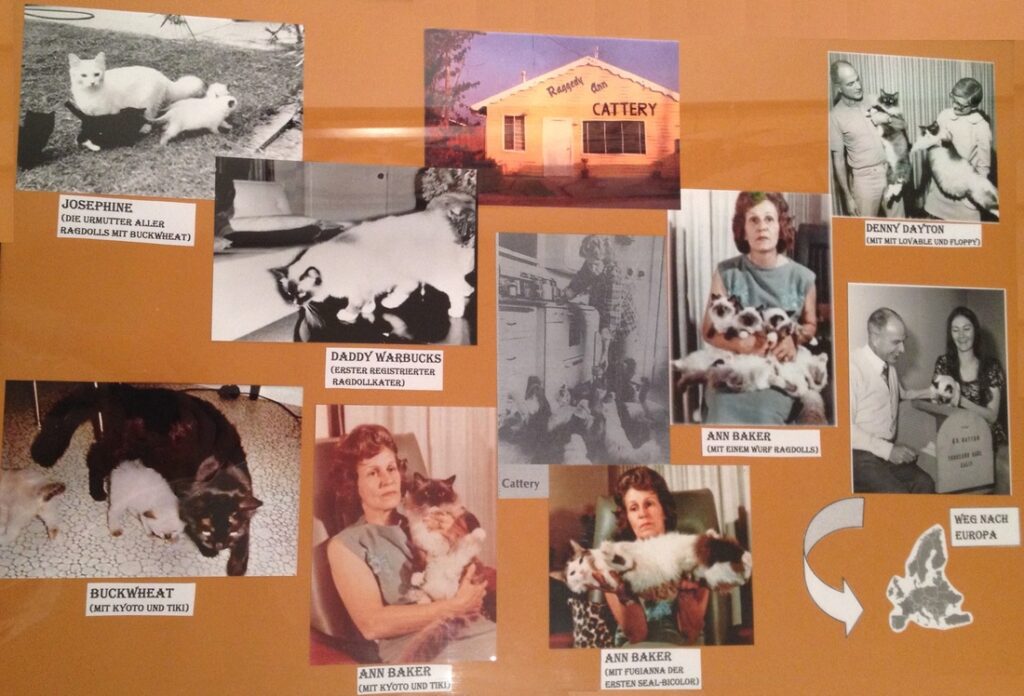
Every owner of a thoroughbred cat sooner or later becomes interested in learning more about it and where it came from. Ragdoll is no exception; the more this cat’s popularity grows, the more interest is in where it’s from. So in this article we will tell you about the ragdoll cat origin, its history and the first owner of this breed.
How was the Ragdoll cat created
The history of the Ragdoll cat started in the early 1960s in Riverside, California.
At that time, there lived a white Angora cat named “Josephine”, who was a free-ranger and therefore occasionally had a few kittens. The litter attracted the interest of Ann Baker, a neighbor of Josephine.
One day – Josephine was in foal – she was hit by a car and seriously injured. She and her still unborn litter survived the accident, and Josephine still gave birth to a healthy litter.
Ann Baker was very fond of the kittens because they had semi-long fur and blue eyes. She also noticed that the kittens were bigger and dearer in character than the babies Josephine had given birth to before. Therefore, Ann Baker asked her neighbor if she could have kittens from this litter.
With these kittens and a male similar to Burmese and other unknown cats, Ann Baker now built up a line breeding to create a new cat in this way.
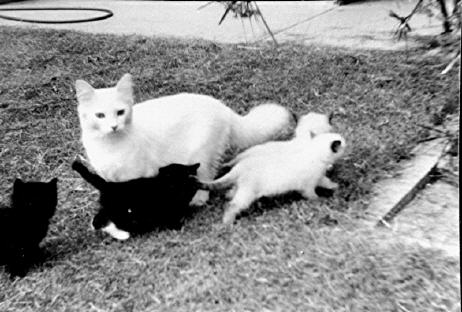
The offspring from these matings were the very first Ragdolls. They were very large and beautiful, had a semi-long coat, a lovely character, and could be carried in the arm like a rag doll totally relaxed. Ann Baker gave the breed the name “Ragdoll” which means rag doll. She had this name officially registered for the first time in 1965.
Once a Ragdoll cat has gained trust in her owner, she can, if she wants to, really snuggle into the arms of her human companion like a “rag doll”, totally relaxed and limp. However, only when she feels like it. This relaxed behavior, however, is also shown by other cats when they feel comfortable, and thus it probably cannot be considered a unique breed trait – as Ann Baker called it.
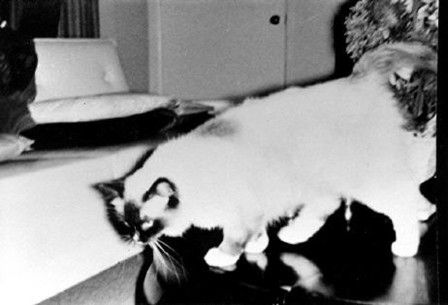
Unfortunately, the founder did not breed out of pure love for animals, but tried to market the cat commercially for herself. Ragdoll cat history tells that in order to draw more attention to the then completely unknown cat breed, Ann Baker advertised that all Ragdolls were absolutely insensitive to pain.
She established breeding guidelines that all Ragdoll breeders had to continue the line breeding in her sense, that matings could only be made with her approval and that the Ragdoll breeders had to inform her to whom a kitten was sold. She was also not afraid to register and copyright the name Ragdoll in her name with an American patent office.
This meant that she could give the name Ragdoll to any cat born in her cattery, regardless of its origin. She also demanded a commission from each breeder for each cat sold.
The role of the Dayton and Chambers families in the Ragdoll cat history
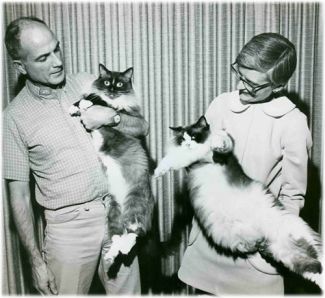
Fortunately for the breed, there were breeders who did not play ball on this one. Among them were Laura and Denny Dayton, and Georgann and Dave Chambers. They had already broken away from Ann Baker and continued to distribute with their Ragdoll cats before Ann Baker had patented the name. Much to the chagrin of Ann Baker, they were therefore allowed to continue to use the name Ragdoll officially.
The two aforementioned breeder families are in Ragdoll circles probably the best-known USA-beginning breeders, who continued with the Ragdoll breeding really successfully. They didn’t spread scare stories and continued the Ragdoll breed consistently in its original form and colors.
Their cattery names are Blossom-Time and Ragnarok. They can be found in numerous Ragdoll pedigrees. Today, many believe that the cat breeders who broke away from Ann Baker at that time made the Ragdoll cat what it is known as today.

